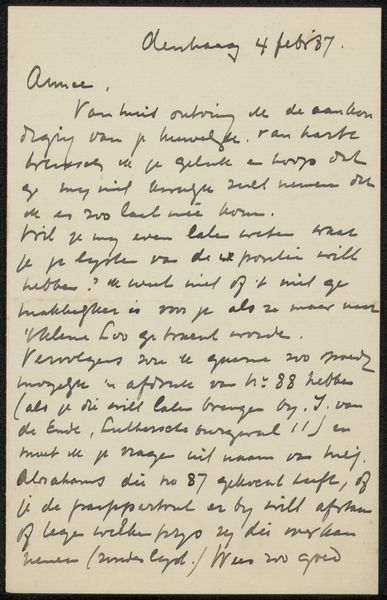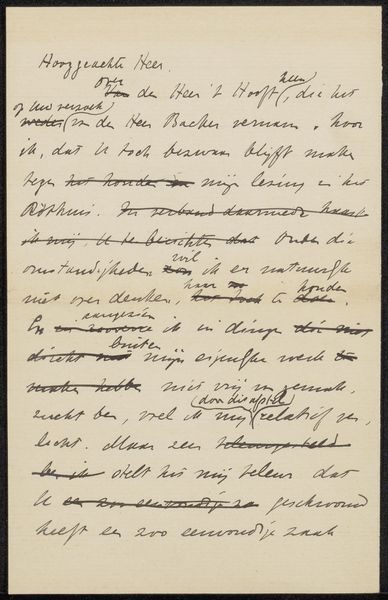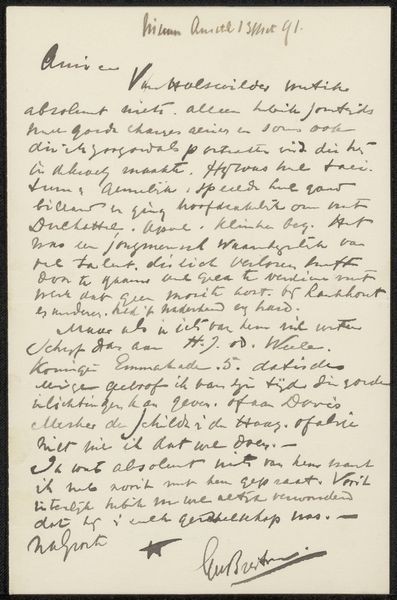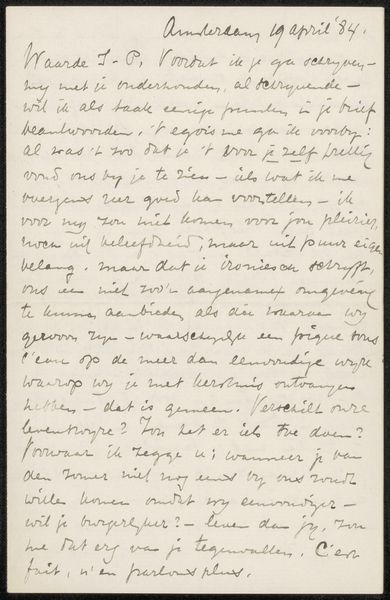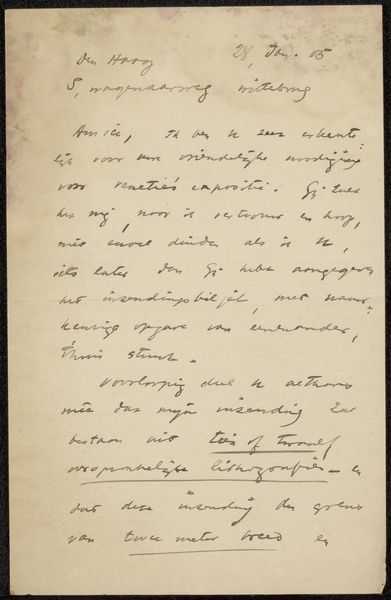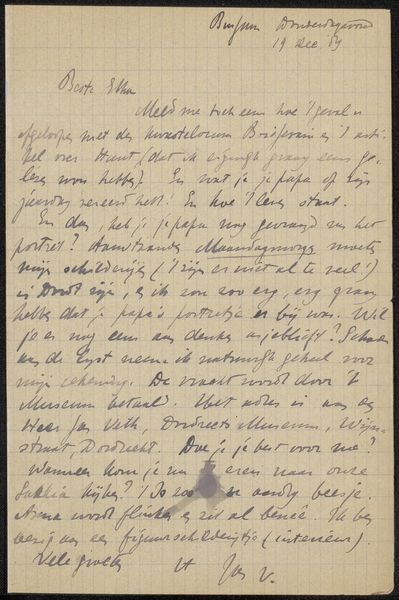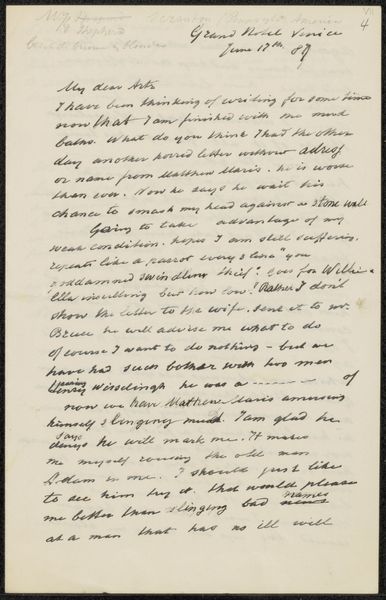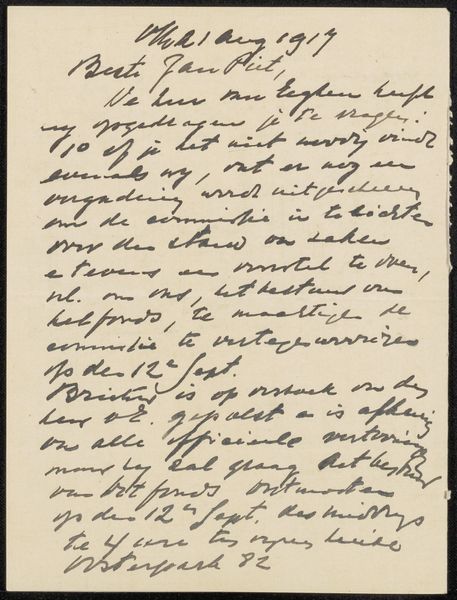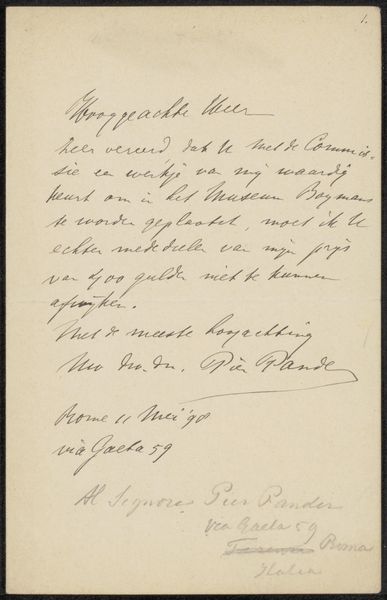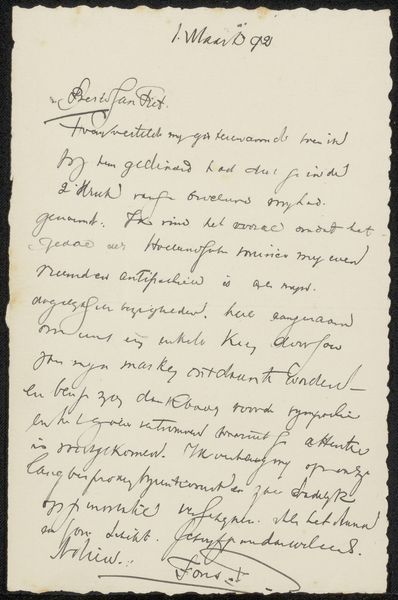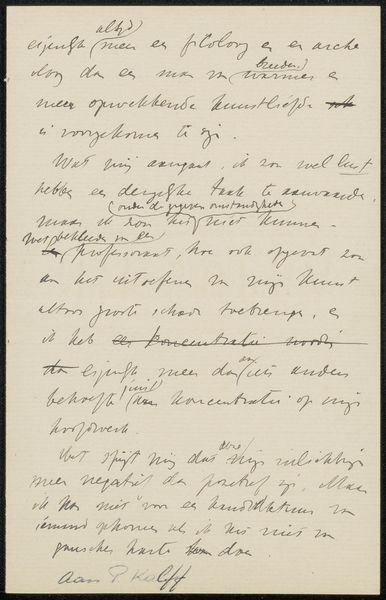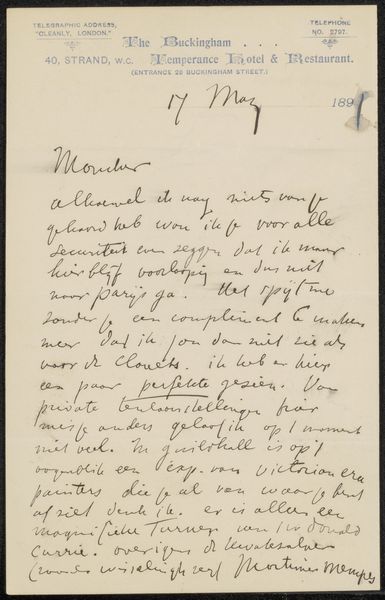
drawing, paper, ink
#
drawing
#
pen drawing
#
paper
#
ink
Copyright: Rijks Museum: Open Domain
Curator: Here we have Willem Witsen's "Brief aan Jan Veth," a pen and ink drawing on paper, believed to be from around 1887. It's part of the Rijksmuseum's collection. At first glance, it's intimate. Almost voyeuristic, a snapshot into a private correspondence frozen in time. Editor: It evokes a sense of urgency. Look at the script: tight, economical with space. Each stroke has a deliberate direction, like thoughts racing onto the page. You almost feel the weight of history pressing on each word, bearing the context of social, political, and intellectual currents from its period. Curator: Indeed. Witsen's social circle was deeply entwined with artistic and political discourse. His correspondence reflects not just personal thoughts, but the very debates shaping the cultural landscape. You get a sense of what a connected artist would need to attend to every day. Editor: Precisely! Consider what a letter represents: communication across distance and time. What were Witsen and Veth discussing that necessitated such detail and thought? And who had access to that kind of conversation? The privilege and agency of artistic circles always needs careful deconstruction when presented as pure beauty. Curator: That’s fair, but consider the physicality of the drawing. Witsen chose humble materials, accessible even then, which speaks to a level of pragmatism but could equally connect to anti-establishment sentiments typical of young artists looking for avenues of expression against dominant art scenes. Editor: Sure, the choice of materials matters, and is connected with accessibility and resistance—it brings up issues of class, labor, and artistic value, too. And consider how handwriting reveals so much. A study of that script can speak volumes, not just about the letter's explicit content, but of its subtext and implicit cultural biases. How do those gestures then reflect gendered assumptions? Curator: A valid perspective. The penmanship does betray certain conventions that existed. Editor: This simple letter is so much more than just ink on paper. Curator: Agreed. It encapsulates a specific historical moment, offering insights into the artistic networks. Thank you for your perspectives today. Editor: My pleasure, understanding historical forces enriches our experience of it today, ensuring a broader reflection and engagement, inviting critique and questioning of both artist and their artwork.
Comments
No comments
Be the first to comment and join the conversation on the ultimate creative platform.
